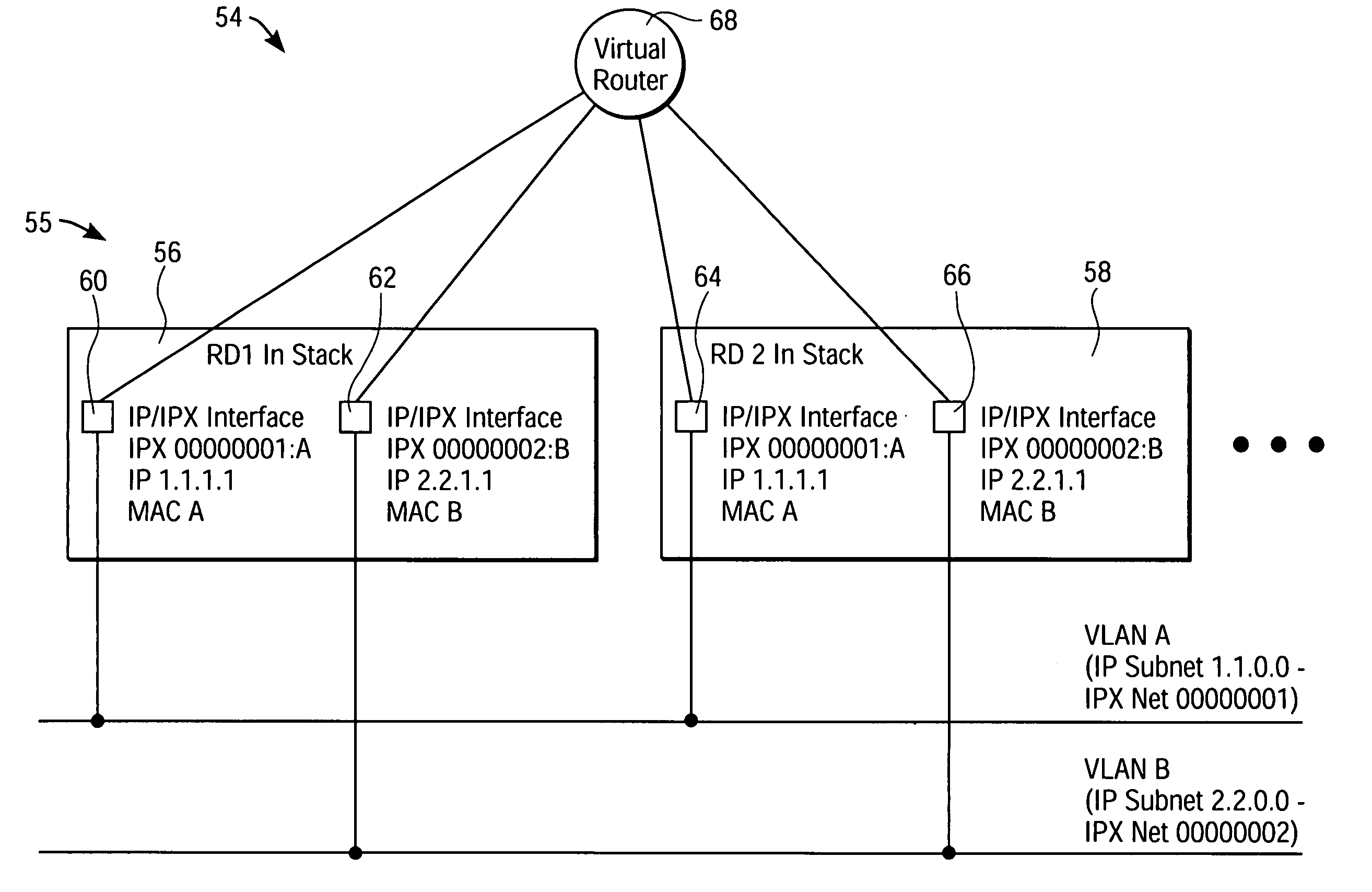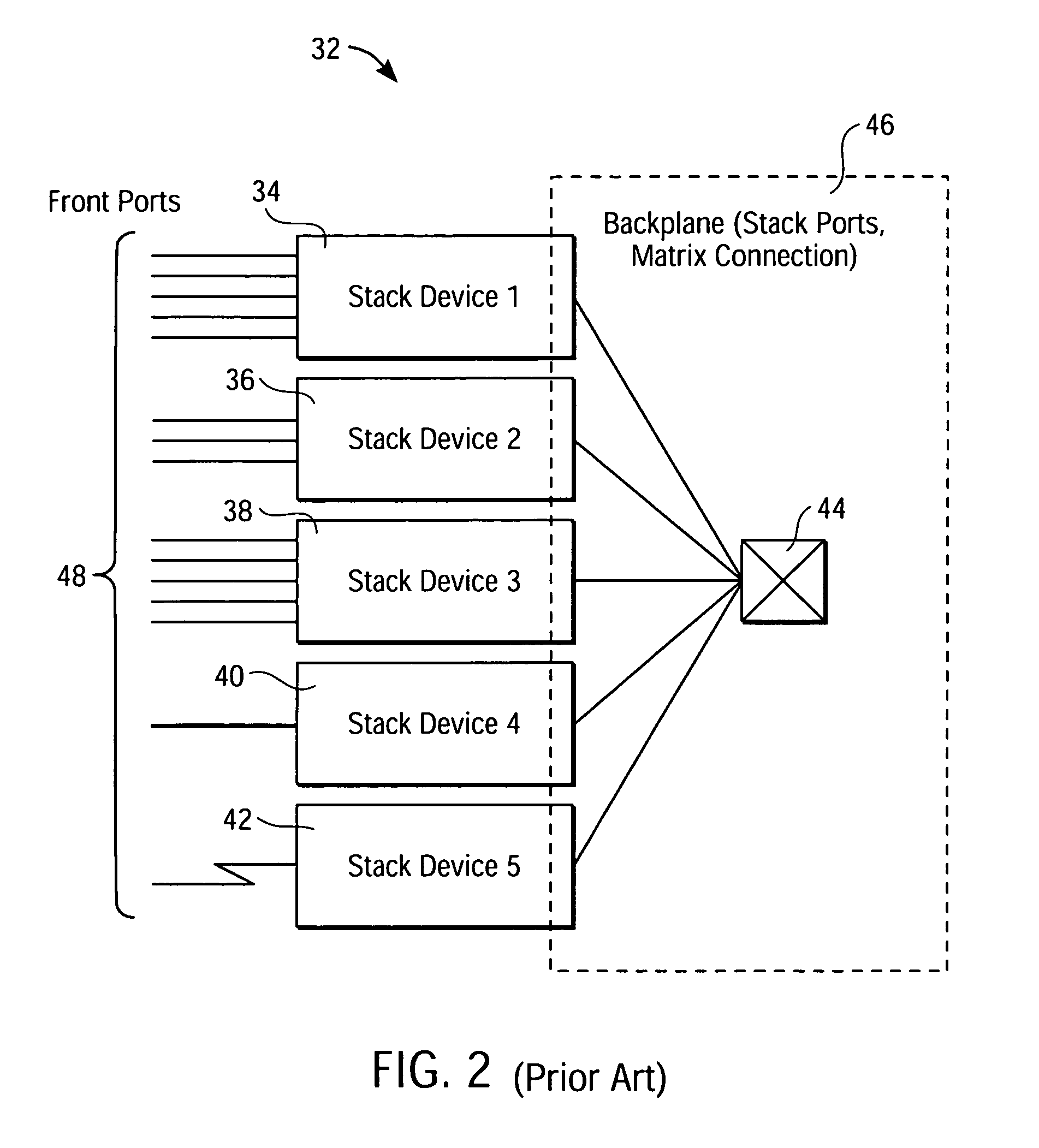Method and system for emulating a single router in a switch stack
a technology of switch stack and router, which is applied in the field of network computer systems, can solve the problems of limiting the scalability of configurations such as those shown in fig. 2 and 3
- Summary
- Abstract
- Description
- Claims
- Application Information
AI Technical Summary
Problems solved by technology
Method used
Image
Examples
case 1
[0034]Case 1: Layer 3 or Layer 4 Asymmetric Routing.
[0035]FIG. 7 illustrates an example of an asymmetric routing procedure for the switch stack 54 of FIGS. 4 and 5. In FIG. 7, a packet is to be routed from a sending node (such as the station 78 or “Node a”) in the VLAN A to a receiving node (such as the station 80 or “Node b”) in the VLAN B. Node a is connected to the RD 56 via a front port F1, with Node a having a MAC address of “MAC a.” Node b is connected to the RD 58 via a front port F2, with Node b having a MAC address of “MAC b.” The packet is sent from Node a in the VLAN A to the first IP / IPX interface 60 of the RD 56, with the packet being sent with a destination MAC (DMAC) address of “MAC A” for the IP / IPX interface 60, a source MAC (SMAC) address of “MAC a” for Node a, a destination IP (DIP) address for Node b, and a source IP (SIP) address for Node a. The RD 56 then routes the packet to the second IP / IPX interface 62 of the RD 56, and from there, the packet is sent on a s...
case 2
[0038]Case 2: NRD Filtering.
[0039]Because all RDs in the switch stack 54 share the same MAC address, such as the “MAC A” address for the IP / IPX interfaces 60 and 64 that corresponds to the VLAN A shown in FIG. 7, a unicast packet sent from a node in a VLAN and having a destination address of “MAC A” can potentially go to any of the RDs. Therefore, NRDs according to an embodiment of the invention include a filtering mechanism that enables the NRD to forward a unicast packet received from one of its VLAN nodes and destined for “MAC A” to a router MAC address of the specific RD that owns the NRD and to no other RD.
case 3
[0040]Case 3: Nodes Send a Multicast / Broadcast Packet Requiring a Unicast answer.
[0041]In this situation, only one RD needs to send a unicast reply to the node that sent the multicast / broadcast packet. The RD that sends the unicast reply can be chosen as the RD that receives, on an “owned” port as previously described above, the multicast / broadcast packet from the node.
PUM
 Login to View More
Login to View More Abstract
Description
Claims
Application Information
 Login to View More
Login to View More - R&D
- Intellectual Property
- Life Sciences
- Materials
- Tech Scout
- Unparalleled Data Quality
- Higher Quality Content
- 60% Fewer Hallucinations
Browse by: Latest US Patents, China's latest patents, Technical Efficacy Thesaurus, Application Domain, Technology Topic, Popular Technical Reports.
© 2025 PatSnap. All rights reserved.Legal|Privacy policy|Modern Slavery Act Transparency Statement|Sitemap|About US| Contact US: help@patsnap.com



